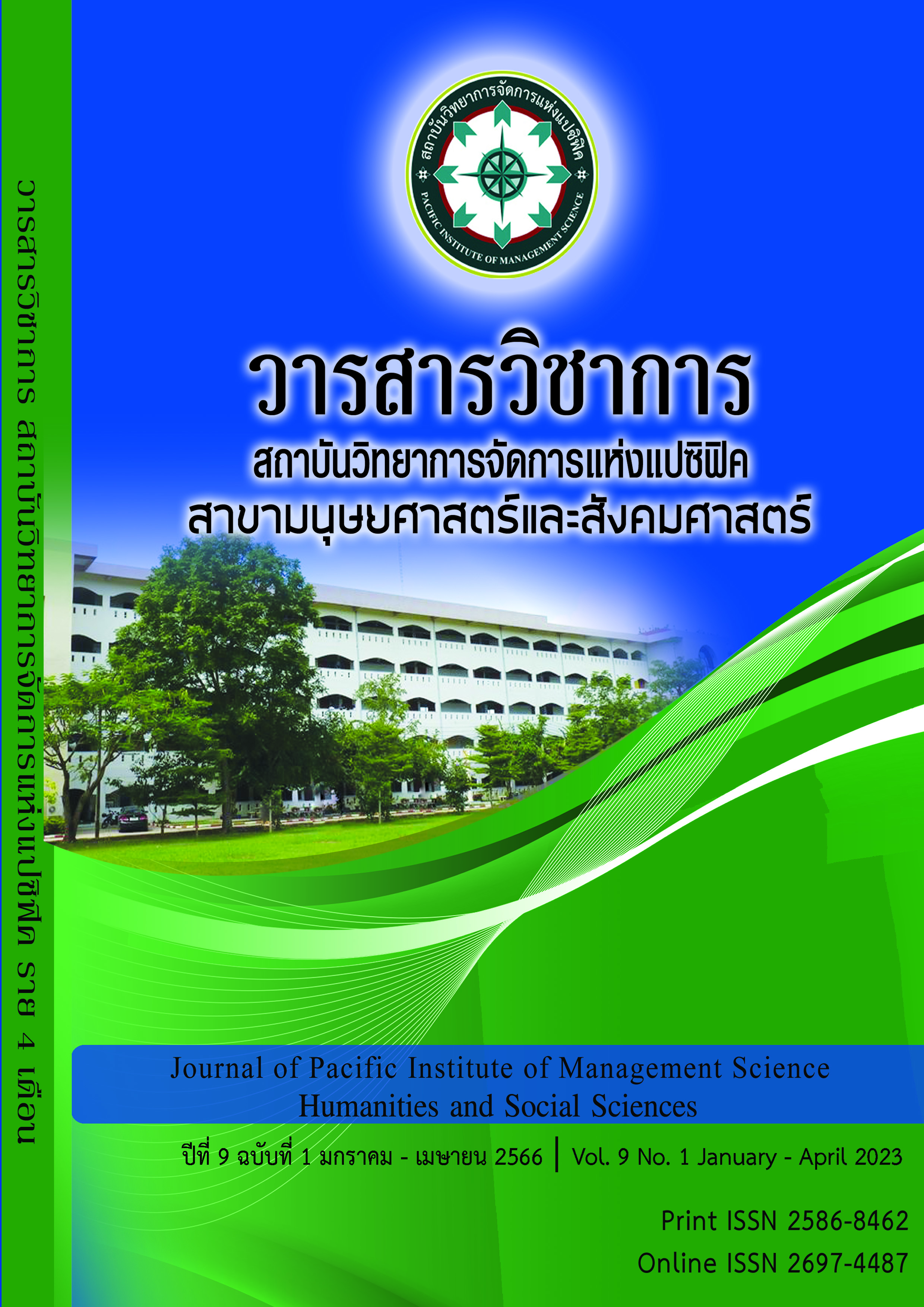Learning Plan Management Integrated with STEM Education to Enforce Creative Ability for Kindergarten Students 3
Keywords:
Learning Plan Management Integrated with STEM Education, Creative AbilityAbstract
The purposes of this research were 1) to construct and find the quality of learning experience integrated with the learning management called STEM Education for Kindergarten 3, 2) to try out and study the outcomes of plan management as follows: 1) to compare the creativity of Kindergarten students 3 after learning with the criteria of 70%, 2) to study students’ satisfaction towards the learning plans. The sample groups were 15 Kindergarten students 3 who are studying in the first semester of the academic year 2022 at Wat Pak Nam School, Sawankhalok District, Sukhothai Province by simple random sampling. The data were collected by employing 1) learning management plans integrated with STEM Education learning plans, 2) a test on creative ability for Kindergarten students 3, 3) a test for students’ satisfaction and, analyzed by administering mean, percentage, and standard deviation, and t-test one sample.
The findings found that the Learning Plan Management Integrated with STEM Education to Enforce Creative Ability for Kindergarten Students 3 comprised 8 plans with 6 stages of STEM Education as follows: 1. Problem identification, 2. Collection of data and ideas related to problems, 3. Design of problem-solving, 4. Planning and implementation of problems, 5. Testing, evaluating, and adjustment of problem-solving methods or pieces of work, 6. The presentation of problem-solving is shown as follows:
- The quality value of the learning experience management plans integrated with the STEM Education plan was highly appropriate.
- The comparative outcomes of students’ creativities were higher than the set of 70 percent.
- The students’ satisfaction with the learning experience management plans integrated with the STEM Education plan overall was at the highest level.
References
กระทรวงศึกษาธิการ. (2560). หลักสูตรการศึกษาปฐมวัย พุทธศักราช 2560. กรุงเทพฯ: คุรุสภาลาดพร้าว.
ชลาธิป สมาหิโต. (2560). การจัดประสบการณ์การเรียนรู้แบบสะเต็มศึกษาเรื่อง วัฒนธรรมท้องถิ่นจังหวัดนนทบุรี. การศึกษา. ศึกษาศาสตร์ มหาวิทยาลัยเกษตรศาสตร์.
เบญจกาญจน์ ใส่ละม้าย และชลาธิป สมาหิโต. (2558). การพัฒนาความคิดสร้างสรรค์สำหรับเด็กปฐมวัยโดยผ่านการจัดประสบการณ์การเรียนรู้แบบสะเต็มศึกษาเรื่อง อาชีพในท้องถิ่น จังหวัดสงขลา. ศึกษาศาสตร์มหาบัณฑิต (ปฐมวัยศึกษา). ศึกษาศาสตร์ มหาวิทยาลัยเกษตรศาสตร์
ยุวดี มีชัย. (2563). การพัฒนาทักษะพื้นฐานทางวิทยาศาสตร์สำหรับเด็กปฐมวัยโดยการจัดกิจกรรมตามแนวสะเต็มศึกษา (STEM Education). การศึกษา. ครุศาสตร์ มหาวิทยาลัยราชภัฏพิบูลสงคราม.
วัชรา เล่าเรียนดี, ปรณัฐ กิจรุ่งเรือง และอรพิณ ศิริสัมพันธ์. (2560). กลยุทธ์การจัดการเรียนรู้เชิงรุกเพื่อพัฒนาการคิดและยกระดับคุณภาพการศึกษาสำหรับศตวรรษที่21. (พิมพ์ครั้งที่ 12). นครปฐม : เพชรเกษมพริ้นติ้ง กรุ๊ป จำกัด
วิชญาพร อ่อนปุย และพิชญาภา ตรีวงษ์. (2561). การพัฒนารูปแบบการสอนตามแนวคิดสะเต็มศึกษา (STEM) เพื่อพัฒนาทักษะการคิดวิเคราะห์ของนักศึกษาที่ศึกษาในรายวิชาคณิตศาสตร์สำหรับเด็กปฐมวัย. การศึกษา. ครุศาสตร์: มหาวิทยาลัยราชภัฏเพชรบูรณ์.
วีณา ประชากูล. (2549). การส่งเสริมความคิดสร้างสรรค์ปฐมวัยศึกษาด้วยสื่อของเล่น.วารสารวิชาการ, 9(4), 20-25.
สุคนธ์ สินธพานนท์. (2552). พัฒนาทักษะการคิด. กรุงเทพฯ: โรงพิมพ์เลี่ยงเชียง
อภิสิทธิ ธงไชย. (2556). สรุปการบรรยายพิเศษเรื่องสะเต็มศึกษาและการพัฒนาความคิดสร้างสรรค์ (STEM Education and Creativity Enhancement). สืบค้นเมื่อ 7 มิถุนายน 2563, จาก http://www.chancoaching.rbru.ac.th/images/stem.pdf Z.
Downloads
Published
Issue
Section
License
Copyright (c) 2023 Pacific Institute of Management Science

This work is licensed under a Creative Commons Attribution-NonCommercial-NoDerivatives 4.0 International License.
บทความที่ได้รับการตีพิมพ์เป็นลิขสิทธิ์ของ สถาบันวิทยาการจัดการแห่งแปซิฟิค
ข้อความที่ปรากฏในบทความแต่ละเรื่องในวารสารวิชาการเล่มนี้เป็นความคิดเห็นส่วนตัวของผู้เขียนแต่ละท่านไม่เกี่ยวข้องกับสถาบันวิทยาการจัดการแห่งแปซิฟิค และคณาจารย์ท่านอื่นๆในสถาบันฯ แต่อย่างใด ความรับผิดชอบองค์ประกอบทั้งหมดของบทความแต่ละเรื่องเป็นของผู้เขียนแต่ละท่าน หากมีความผิดพลาดใดๆ ผู้เขียนแต่ละท่านจะรับผิดชอบบทความของตนเองแต่ผู้เดียว







